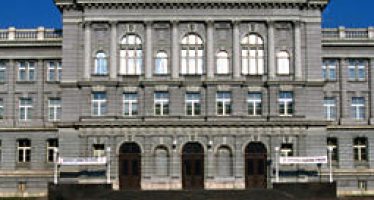The Renewable Electricity Grid: The Future Is Now
 New World Bank report finds that with the right policies and investments, countries can integrate high levels of variable renewable energy such as solar and wind into their power grids without compromising the reliability or affordability of electricity
New World Bank report finds that with the right policies and investments, countries can integrate high levels of variable renewable energy such as solar and wind into their power grids without compromising the reliability or affordability of electricity- Together with falling prices for solar panels and wind turbines, these new approaches can facilitate a scale up of renewable energy in developing countries
- The report focuses on the complementary role of natural gas and energy storage in electricity grids that draw on high levels of solar and wind
Even a few years ago, renewable energy played only a small role in most countries’ energy planning. While governments and publics were eager to increase the share of renewables in their energy systems, the economics of doing so were challenging. There were also serious concerns about the impact on the electricity grid of adding too much capacity from variable renewable energy sources, such as solar and wind.
This has all changed. Prices for inputs—particularly for solar photovoltaic panels and wind turbines—have come down so far that renewable power is now cost-competitive with conventional generation in some regions. As of 2014, 144 countries had established national plans to expand renewable energy, and almost hundred had set specific targets and incentives.
And as a new report from the World Bank’s Energy Sector Management Assistance Program (ESMAP) makes clear, with the right combination of new policies and investments, countries can integrate unprecedented shares of variable renewable energy into their grids without compromising adequacy, reliability or affordability.
“Renewables are no longer a marginal business,” said Anita Marangoly George, senior director of the World Bank’s Energy and Extractives Global Practice. “We are talking about levels of energy that can bring light to thousands of households, grow businesses, meet the needs of cities, and drive entire economies.”
Making the transition to large-scale renewable energy supply requires substantial shifts in thinking and infrastructure: grid modernization, adoption of new technologies, reworked business models for utilities, and updated policy and regulatory frameworks. The new ESMAP report, Bringing Variable Renewable Energy Up to Scale: Options for Grid Integration Using Natural Gas and Storage, looks at a number of new approaches to facilitate these shifts and ensure the success of this transition.
“Renewables are no longer a marginal business. We are talking about levels of energy that can bring light to thousands of households, grow businesses, meet the needs of cities, and drive entire economies.”
– Anita Marangoly George, Senior Director, Energy and Extractives Global Practice, World Bank Group
These approaches include strengthening interconnections between areas, diversifying the contribution of different renewable energy sources from various locations, and building up complementary generation and demand response technologies. The report builds upon previous reports on the topic published by the World Bank and other international organizations, by focusing on the important role that natural gas and energy storage can play in integrating variable renewable energy sources.
With their fast start-up times, natural gas-fired power generation technologies have an edge over other conventional generation options such as nuclear or coal in that they can ramp up and down quickly, providing power as needed to balance variations in wind and solar inputs.
Likewise, energy storage options have the potential to address most of the challenging aspects of integration. Comprising a wide range of technologies—including pumped hydro, compressed air, multiple battery technologies, and thermal storage—energy storage can act as a source of demand (through charging) at times of low energy use throughout the day, and a source of supply (through discharging) when demand increases.
As the report makes clear, this new comprehensive approach also brings new challenges. For example, using natural gas for complementary power generation can have an impact on national budgets and gas procurement strategies, and running gas generators on a part-time basis can also increase maintenance costs.
Utilities and regulators will also have to rethink their business models to accommodate an increasing number of clients that are both consumers and distributed generators.
Additional compensation mechanisms or incentives may need to be created for flexibility and reserve capacity, so that system operators can procure the necessary supply to ensure reliable delivery of electricity.
These and other policy proposals mark just how far forward the debate has come, according to Anita Marangoly George.
“Five years ago, we would not have even been talking about these issues,” she said. “We are no longer talking about getting to five percent renewable energy penetration; we are talking about the challenges of balancing when you go above 20 percent. We are no longer talking about intermittency; we are talking about managing variability across the entire system.” Source
You may have an interest in also reading…
World Bank’s Vice President for Infrastructure: Now is the Time to Rethink Transport and Logistics
Covid-19 has had a huge impact on transport. The response to the pandemic, from social distancing to lockdown policies for
Jusan Bank’s Nurdaulet Aidossov: Deep Fintech and Telecom Collaboration
‘We have built a golden digital bridge between business and retail client,’ says Jusan Bank CEO Nurdaulet Aidossov. Banking and
World Bank Group: Spurring Job Growth in the Western Balkans – Research and Innovation
By Paulo Correa and Christopher Colford Promoting economic growth and job creation requires innovative industries that can make imaginative use of business



















































































